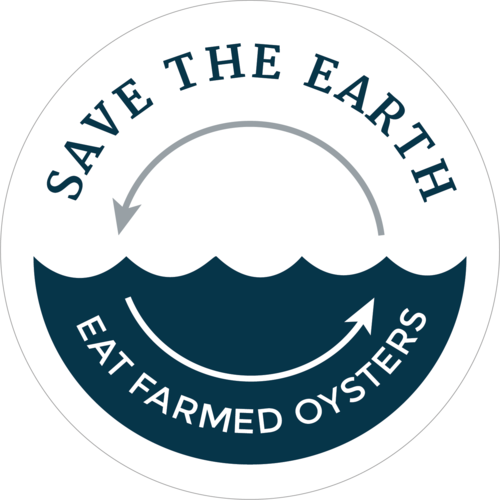Did you know that in the 1800s oyster bars in New York City were located in the basements of buildings? They were called oyster cellars, refectories (a room for communal eating) or dives (presumedly for diving down the stairs). These cellars were distinguished by the red lanterns hung above the cellar stairs. The only women welcome in these establishments were prostitutes. Did you know that most oyster cellars were owned and operated by African Americans? The most famous of these proprietors was a man named Thomas Downing, who at the time of his death was one of the wealthiest men in New York City.
Thomas Downing (1791-1866) made oyster cellars respectable. He turned his into one of the fanciest eating establishments in New York City. He innovated by welcoming wives and even children when accompanied by their husbands and/or fathers, of course. He only served the best oysters from each day’s catch and his establishment was famous the world over. He was also a tireless abolitionist who was barred from citizenship until the Civil Rights Act of 1866 became law, the day before he died.
Thomas Downing was born in Chesapeake Bay oyster country, specifically on Chincoteague Island, on the Eastern Shore of Virginia. His parents had been enslaved by a sea Captain who released them from slavery when he realized that owning slaves was counter to his Methodist Faith. The Captain, John Downing, set up a Methodist Meeting House and Thomas’ parents, who had adopted his name, became the paid caretakers of the property. This income made it possible for them to buy some land where they and their children provided for themselves. They made extra money by selling a variety of shoreline animals, including terrapin, clams and oysters. His hospitable parents welcomed their wealthy neighbors into their home. Their children were educated by the same tutor as their neighbors’ children, including Henry A. Wise who would become Governor of Virginia (1861-1865).
Thomas joined the army and followed it to Philadelphia at the end of the War of 1812. In Philadelphia, Thomas oystered, was a valet, met and married Rebecca West, and opened his first oyster joint. He moved on and by 1820 was registered as an oysterman in New York City. (At this time, the majority of registered oystermen in New York Harbor were also of African descent). Thomas began in New York by raking and tonging for oysters, bringing his catch in and selling it on the street. Oysters were so abundant and therefore cheap that this was certainly not the road to riches. More money was made by turning your basement room into an oyster cellar where oysters were the loss-leader for booze. However, oyster cellars were also abundant and cheap and in order to separate from the others, Downing innovated in several ways.
The Thomas Downing Oyster House, opened in 1825 at 5 Broad Street, was indeed located in the basement apartment, but it was decidedly upscale. This fantastic location was a few blocks away from Five Points, the African American neighborhood where most of the downtown oyster dives were located, and in the heart of the business district. It was decorated to perfection with damask curtains, gilded mirrors and a sparkling chandelier. He further innovated by welcoming wives - as long as they were accompanied by their husbands. According to Mark Kurlansky, in his book The Big Oyster, Downings was a place “for businessmen who preferred discussing their affairs rather than having them, ... conveniently located near the Customs House, the banks, the Merchants Exchange, and important stores. It stood on the same street where the first oyster cellar had opened in 1763.” His place was exclusive and very popular. One of the reasons was his oysters were the best.
In the wee hours of the morning, Downing would row out to the oyster skiffs and pay a premium for the best oysters on each boat. Then he would meet these skiffs back at the dock where other purveyors were waiting to bid on the day’s oysters catch. Downing would place bids, not with the intention of buying but with the intention of raising the price to the benefit of the captains of the oyster skiffs, making him extremely popular with the skiff captains. He further clinched this market by welcoming these oyster captains at his oyster house.
Thomas Downing antique pickled oyster crock. Spotted and photographed by Call Nichols while visiting Copps Island Oysters in Norwalk, CT.
By 1835, Downing expanded his business to the adjacent buildings (3 and 7 Broad Street) and diversified into a catering, take out and international mail order business. He shipped large quantities of live, fried and pickled oysters all over Europe. Queen Victoria was so taken with the oysters he shipped her that she sent him a gold chronometer watch, which became a treasured family heirloom. He also shipped vast quantities of fried and pickled oysters to the West Indies. The West Indies were a net importer of food during this time because the majority of their arable land was in sugar cane production.
Charles Dickens, however, was unimpressed by the large number of wealthy patrons and the enormous variety of oyster dishes one could get at Downings. He liked both his oysters and his people unadorned. In a backhanded compliment to Downing’s popularity he said he preferred the less crowded oyster cellars of Five Points where oyster lovers, “copying the coyness of the thing they eat, do sit apart in curtained boxes, and consort by twos, not by two hundreds.”
You might think this was enough work for an industrious man, but as his son George attested, his dad never tired. Thomas was also an ardent abolitionist. During this heyday, Thomas was simultaneously running his oyster empire and with the help of his family, one of the most important stops on the Underground Railway. His storage rooms had running salt water, bottles of wine, pickled oysters and fugitives. People escaping bondage - on their way to Canada and freedom.
For decades, he supported the African Free School where his five children were educated. He was a vestryman at the Free African Church of St. Philip, located on Centre Street in lower Manhattan. He was a founder of the all-Black Anti-Slavery Society of the City of New York. In 1827, when NY abolished slavery, he became a founding member of the Committee of Thirteen – an organization dedicated to protecting free people from being kidnapped to the South where they would be sold into the slavery system.
1838, he sued the New York trolley system after a driver beat him up when he refused to get off the trolley. This was the beginning of a 20 year fight to desegregate the trolleys. Downing’s case was thrown out by an all-white jury. But his case was followed with a legal victory by abolitionist Elizabeth Jennings in 1855, who also refused to leave her seat and the New York trolley system was desegregated. This happened 100 years before Rosa Parks helped to launch the Montgomery Bus boycott which led to the desegregation of all public transportation in 1956.
Thomas Downing died on April 10, 1866; one of the wealthiest men in New York City. He was only a legal citizen of the United States for one of those days.
The Civil Rights Act of 1866 declared all male persons born in the United States to be citizens, “without distinction of race or color, or previous condition of slavery or involutary servitude.” President Andrew Johnson vetoed this legislation because he thought the federal government should not interfere between the states and their citizens. On April 6, the Senate voted 33-15 to override Johnson’s veto and Congress followed suit with a 122-41 vote and the Act became law on April 9th, 1866.
Sources for this story include, but are not limited to:
Mark Kurlansky, The Big Oyster (2006).
Matthew Korfhange, The Virginian-Pilot: How a Child of Virginia Slaves Became the Oyster King of New York - and a favorite of the Queen of England (February 15, 2020).
George Downing, AME Church Review: A sketch of the Life and Times of Thomas Downing (April, 1887).
Ayasha Guerin, UNDERGROUND AND AT SEA: Oysters dan Black Marine Entanglements in New York’s Zone-A (2019).
Downing’s Obituary was published in the New York Times on April 12, 1866. Here it is in its entirety:
The well-known colored caterer and oysterman, THOMAS DOWNING, died on Tuesday last, at his residence in this City. The deceased was in the 75 year of his age, having been born in Accomac County, Va., in 1791. His mother, a slave, was a woman of great piety and much respected by her owners, the DOWNINGS. She and her husband were subsequently freed by Capt. DOWNING, and THOMAS was then sent to school studying under the same master as HENRY A. WISE. During the war of 1812, THOMAS, being then about 21 years of age, came North and joined the army. He subsequently went to Philadelphia and became a domestic servant. In 1819 he came to this City, and after setting up as a kalsominer, opened an oyster saloon and eating house in Broad-street, which soon became famed for the excellence of the viands to be procured there. Here he remained until a year or two ago, acquiring a large fortune, when he moved his establishment to the Merchants’ Exchange.
During the great fire of 1835, Mr. DOWNING, by his prescence of mind was the means of rendering essential service to his fellow citizens. The weather wa so cold that the water thrown by the fire engines froze as it left the pipes, and the flames raged almost unchecked. Mr. DOWNING, in conjunction with the late Mr. GERALD HALLOCK of the Journal of Commerce , discovered some barrels of vinegar behind a fence. The heads of the barrels were speedily driven in and the vinegar successfully used to stay the progress of the flames.
Mr. DOWNING raised a large family of children, to whom he gave a liberal education, sending some of them to Europe for that purpose. Only two, GEORGE T., the eldest, and PETER W., the youngest, survive their father.
The deceased was connected with the higher degrees of Masonry, was an Odd Fellow, and for a great many years had been a vestryman of St. Philip’s Protestant Episcopal Church. He took a prominent part in all measures for the elevation of the colored race, and lived an active and useful life.
His remains will be taken on Friday, the 13 inst., at 1o’clock from the residence of Rev. JOHN PETERSON, No.1 Wooster-St., to Philip’s (Episcopal) Church, Mulberry Street, between Houston and Bleecher Streets, where the funeral services will be held.
This post was carefully crafted by Sarah Malinowski










